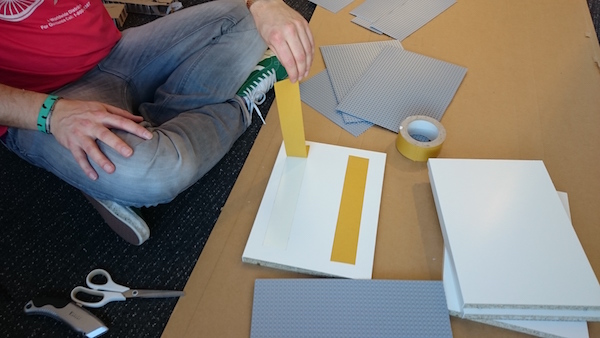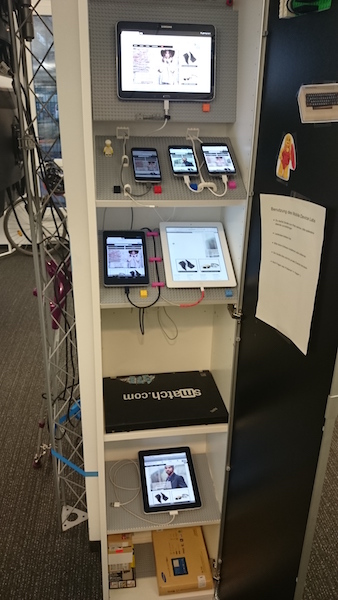February 26, 2016 / by Henrik Niklaus / Software engineer / @
Building a mobile device lab at shopping24
The mobile traffic on our portals has a share of 45% to 55% and rising. The ability to strongly test portals under real live circumstances would gain a great benefit. As consequence we at shopping24 have build a mobile device lab. With lego.
Software
Remote Preview
We first took a look at Remote-Preview. The open source software is quite straightforward to install and maintain. The key mechanism is an iframe which is served by the provided php page. This iframe redirects the requesting browsers to a configured set of URIs. The URIs are managed via a simple text file on the server. After pointing all browsers to this point they will be redirected to the configured URIs.
Remote-Preview is perfect for the first tryout of a mobile device lab software. At a second glance it lacks important features as automatic scrolling of all devices to a specific point on the page and it is also not possible to use one device as the leader for all other devices.
Ghostlab
The next candidate was Ghostlab. It is not open source but the pricing is quite fair for the features you get.
All device keep a synchronized state between each other. If you follow a link or interact with a webpage on one device the others exactly follow, which greatly improves the usability. One also get remote css inspection and editing. If you simply want to tryout a css fix on a device without deploying a new application this comes in handy.
Drawbacks of ghostlab are that once you started a testing session on one specific domain you may not leave that domain without confusing all other devices. Also interactions which trigger a popup fail on all following devices in chrome because a popup allways requires a direct user interaction.
Regardless of these drawbacks ghostlab meets our main requirements and for now we stick with it.
Hardware
As container we chose the classic IKEA Billy bookcase including a glass door to obfuscate our device lab a bit for external visitors.

We sticked some lego baseplates on the shelfs and mounted them a bit sloped so that everybody could catch all devices at once.

The devices got a glue pad on the backside, together with a simple lego brick they stick wherever you want on the baseplate.

To pick the most popular mobile devices on our portals we consulted our google analytics tracking and ended up with the following ones
- Samsung Galaxy S5 mini
- Samsung Galaxy S5
- IPhone 6
- IPod Touch 5G
- Google Nexus 7
- iPad 4
- Samsung Galaxy Tab 4 10.1
The last problem is the power supply for all devices. We use an Anker PowerPort which has for now enough usb ports to charge all our devices at once. The wires may be easily guided by lego bridges or similar bricks.
Learnings
Lego is a perfect fit for a mobile device lab! It is easy to handle and simplifies integration of new devices. Ghostlab is not the perfect fit for our needs but it’s featureset is good enough for now. To increase the usage of the mobile device lab it nevertheless will be mandatory to search an alternative which better suits our needs.
And never underestimate the therapeutic effect on your colleagues ;)

